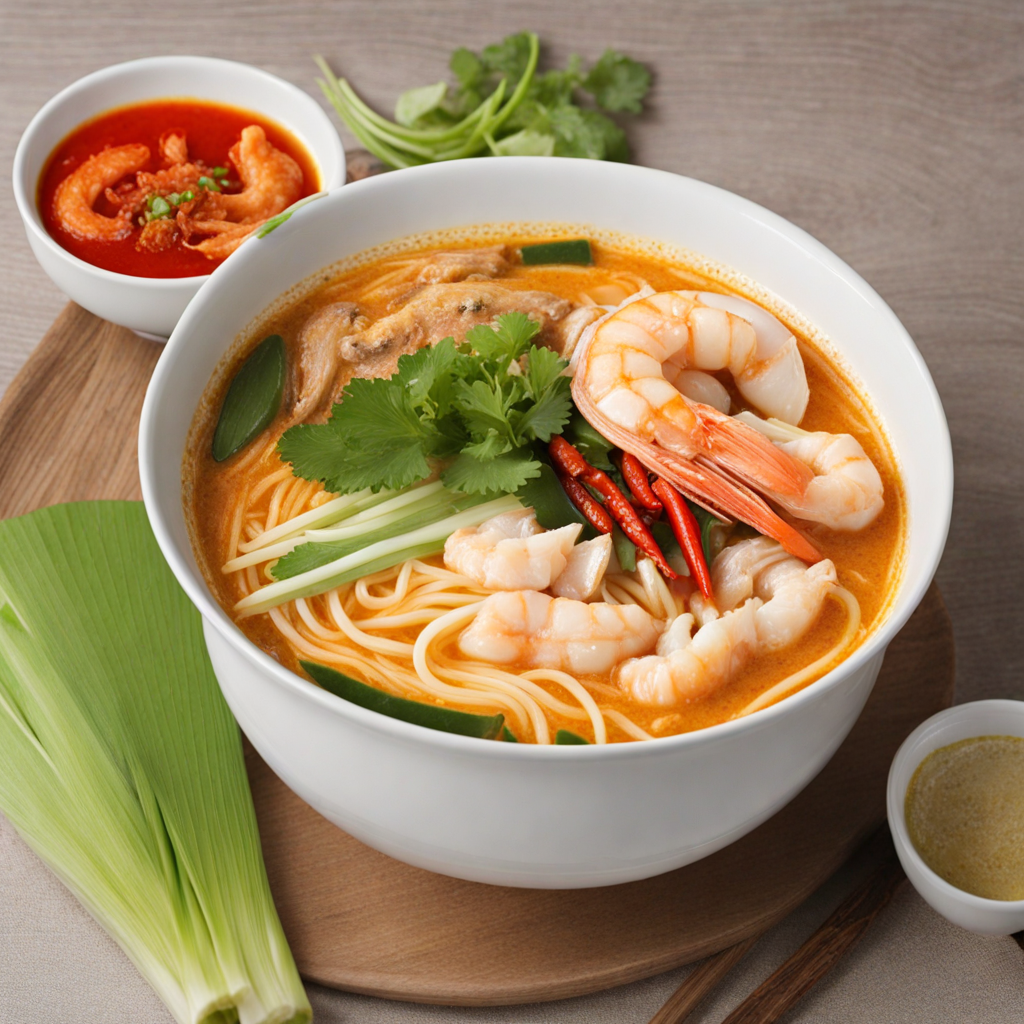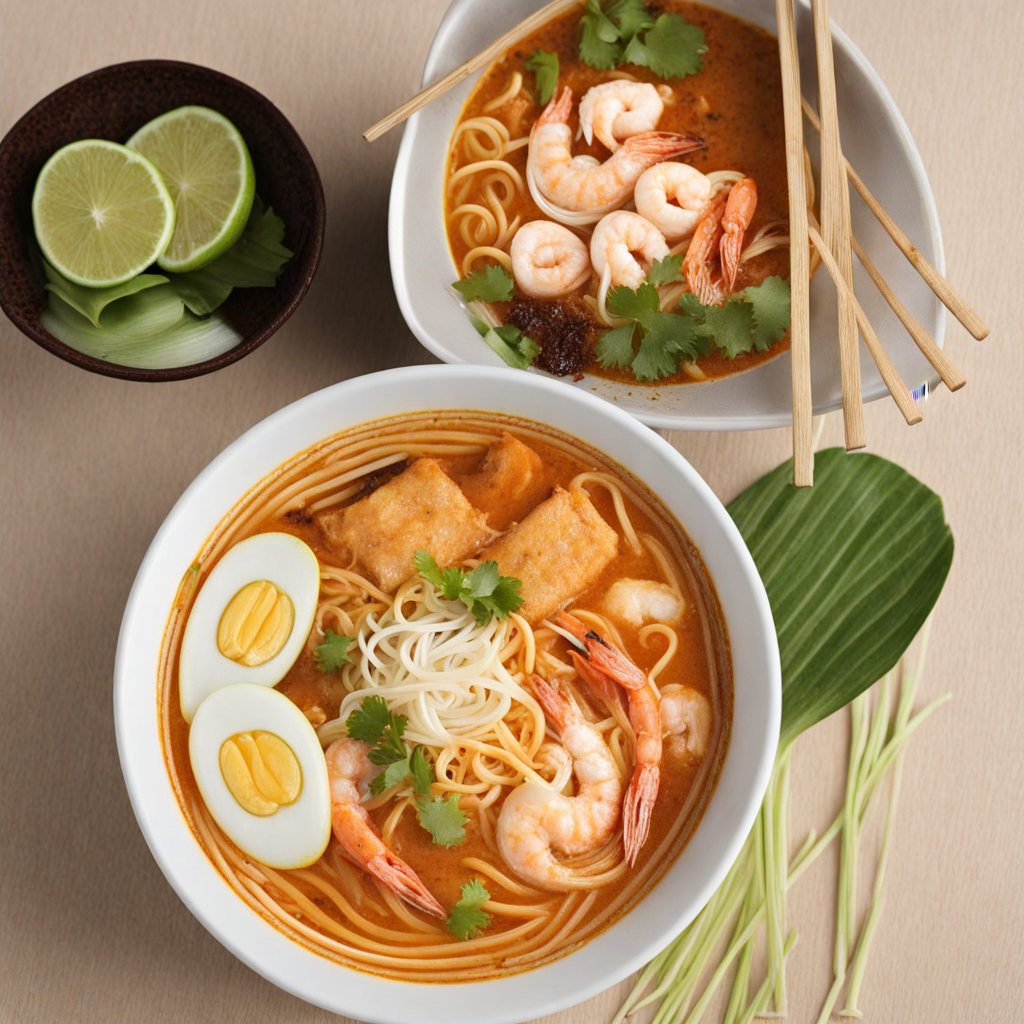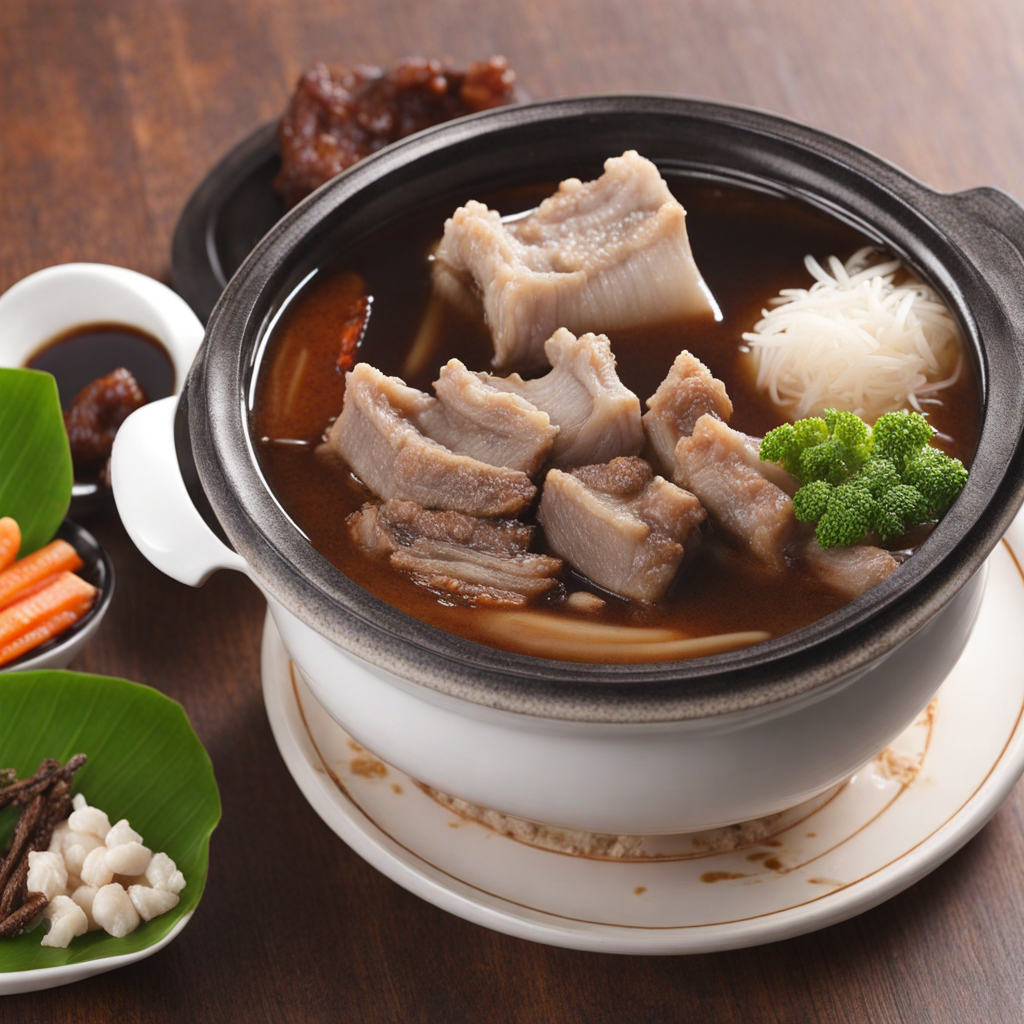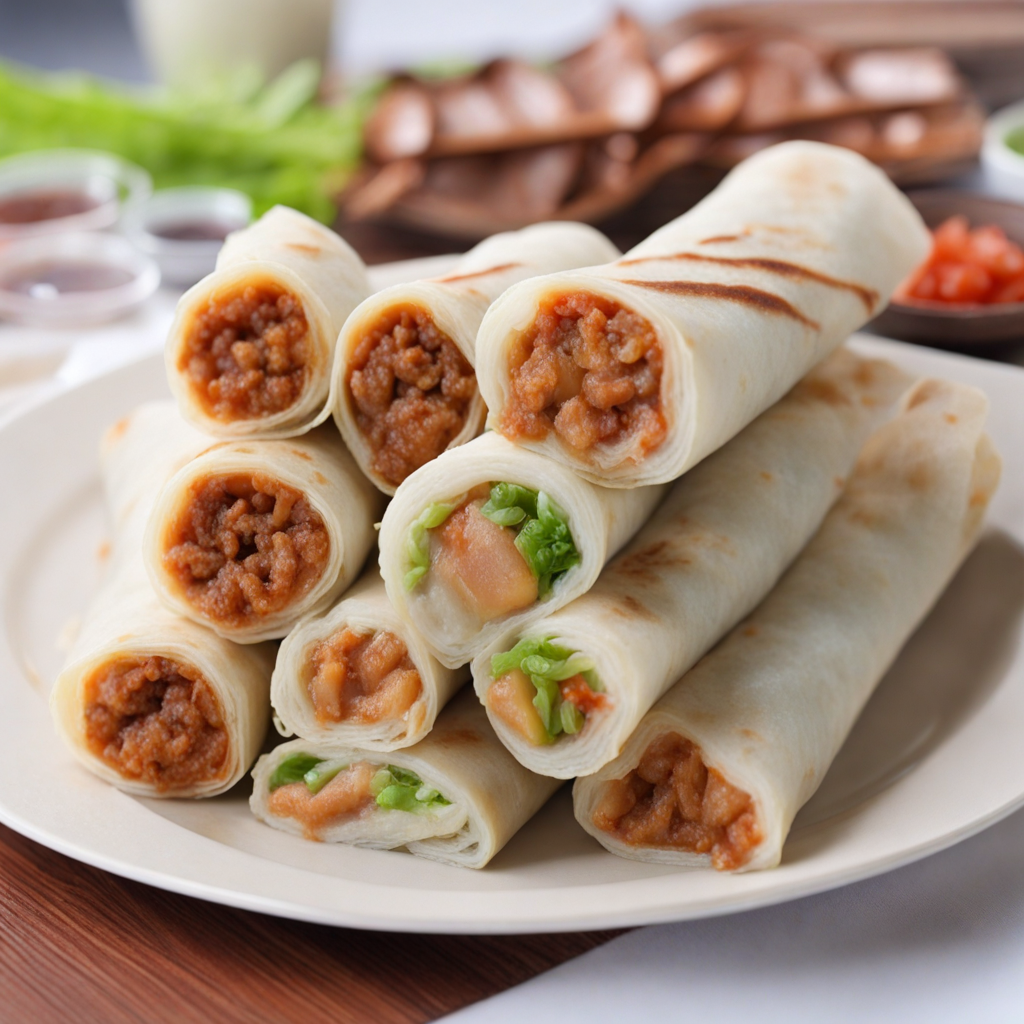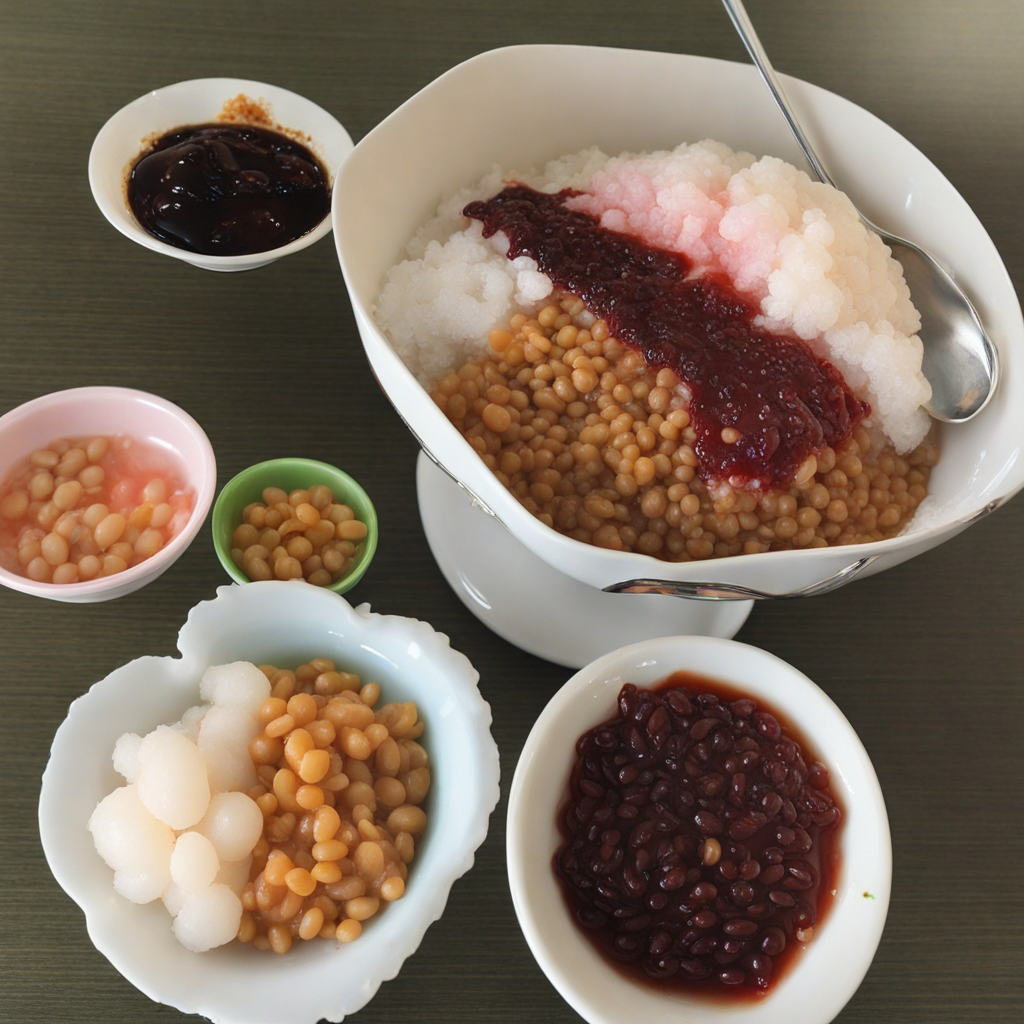Laksa
Laksa is a vibrant and aromatic dish hailing from Malaysia, celebrated for its rich and complex flavors. This spicy noodle soup is a harmonious blend of coconut milk, curry, and fresh herbs, creating a luscious broth that is both comforting and invigorating. The dish typically features rice noodles, which soak up the flavorful soup, making each bite a delightful experience. The base of the broth is often infused with ingredients like lemongrass, galangal, and shrimp paste, lending depth and a tantalizing fragrance that is hard to resist. The two most popular variations of Laksa are Curry Laksa and Asam Laksa. Curry Laksa is known for its creamy coconut milk-infused broth, often enriched with chicken, shrimp, or tofu, and garnished with bean sprouts, boiled eggs, and fresh cilantro. In contrast, Asam Laksa offers a tangy twist with its tamarind-based broth, typically featuring mackerel and an array of fresh vegetables such as cucumber and pineapple. Each variation offers a unique taste profile, making Laksa a versatile dish that caters to different palates. Accompanying Laksa, you may find a selection of condiments like sambal (a spicy chili paste) and lime wedges, which enhance the dish's flavor and allow for personalization. The combination of spicy, sour, and creamy elements in Laksa creates an explosion of taste that is both satisfying and refreshing. Whether enjoyed as a street food staple or a gourmet dish, Laksa promises to be an unforgettable culinary adventure that showcases the essence of Malaysian cuisine.
How It Became This Dish
The History of 'لقسا' (Laksam) in Malaysia #### Origins of Laksam Laksam, a traditional dish hailing from the Malay peninsula, specifically the northeastern states of Malaysia, is a type of noodle soup that carries rich cultural significance and culinary heritage. The name 'Laksam' derives from the Malay word "laksa," which generally refers to a category of spicy noodle soups found throughout Southeast Asia, with variations found in Indonesia, Singapore, and Thailand. However, Laksam has its unique identity, primarily associated with the state of Kelantan and Terengganu. The dish is believed to have evolved from the influence of the Malay community, with historical roots tracing back to the early Malay sultanates and their interactions with Indian traders, who introduced various spices and culinary techniques. The distinct flavors of Laksam are a testament to the fusion of Malay, Thai, and Chinese cuisines, reflecting the multicultural fabric of Malaysia. #### Cultural Significance Laksam holds a special place in Malaysian culture, particularly among the Malay community. It is a staple dish during festive occasions, family gatherings, and religious celebrations, symbolizing unity and community. Traditionally, Laksam is prepared during the month of Ramadan for breaking fast (iftar), as well as during Hari Raya Aidilfitri, where families gather to share meals and strengthen bonds. The preparation of Laksam is often a communal activity, where family members come together to make the rice noodles and the accompanying fish-based gravy. This collaborative approach not only enhances the flavors of the dish but also emphasizes the importance of family and tradition in Malaysian society. #### Preparation and Ingredients The primary ingredients of Laksam include rice flour, which is used to make the thick, flat rice noodles, and a gravy made from fish, usually mackerel, blended with spices such as lemongrass, turmeric, and ginger. The dish is typically garnished with fresh herbs, vegetables, and a dollop of coconut cream, adding richness to the overall flavor profile. The preparation of the rice noodles is an art form in itself, often involving a steaming process that results in a chewy texture, which is a signature characteristic of authentic Laksam. The fish gravy, simmered to perfection, is usually served hot, enveloping the noodles in a fragrant, creamy sauce that tantalizes the taste buds. #### Evolution Over Time Over the years, Laksam has seen adaptations and variations, influenced by regional ingredients and culinary practices. While the traditional preparation remains popular, modern interpretations have emerged, introducing innovative twists to the classic dish. Chefs and home cooks alike have experimented with different types of fish, including salmon and tilapia, and have even incorporated vegetarian options, showcasing the versatility of Laksam. In recent years, the rise of Malaysia's culinary tourism has brought Laksam into the spotlight, with food enthusiasts seeking authentic local experiences. Street vendors and restaurants have begun to offer Laksam as part of their menus, catering to both local and international palates. This exposure has led to a renewed interest in traditional dishes, sparking pride among the younger generation to preserve their culinary heritage. #### Regional Variations As Laksam is deeply rooted in the cultures of Kelantan and Terengganu, it can be found in slightly different forms across these regions. In Kelantan, Laksam is often served with a thicker gravy and accompanied by a side of fresh vegetables, such as bean sprouts and cucumber. In contrast, the Terengganu version may incorporate a lighter broth with more pronounced flavors from herbs and spices, reflecting the local palate. The dish's adaptability allows it to be personalized according to individual tastes, leading to a plethora of variations that celebrate local ingredients and culinary traditions. For instance, some might add a sprinkle of chili flakes for heat, while others may prefer a sweeter profile with additional coconut milk. #### Laksam in the Modern Era In the contemporary culinary landscape, Laksam has transcended its traditional roots, becoming a beloved dish not only in Malaysia but also among the global diaspora. Its popularity has led to the establishment of restaurants specializing in traditional Malaysian cuisine, where Laksam is featured prominently on the menu. Food festivals and cultural events often showcase Laksam, educating attendees about its historical significance and preparation methods. Social media has played a significant role in the resurgence of interest in Laksam, with food bloggers and influencers sharing their culinary experiences, recipes, and adaptations of the dish. This has contributed to a broader appreciation of Malaysian cuisine and the stories behind its dishes, fostering a sense of pride in local culinary heritage. #### Conclusion Laksam is more than just a dish; it embodies the rich tapestry of Malaysian culture, history, and communal values. Its origins reflect the influence of trade and migration, while its preparation signifies the importance of family and tradition. As Laksam continues to evolve, it remains a cherished part of Malaysia's culinary identity, bridging the past and present. As we savor a bowl of Laksam, we partake in a story that spans generations, celebrating the flavors and traditions that define Malaysia’s vibrant culinary landscape. Whether enjoyed at a family gathering or a bustling street stall, Laksam serves as a delicious reminder of the cultural significance of food in bringing people together and preserving heritage.
You may like
Discover local flavors from Malaysia


